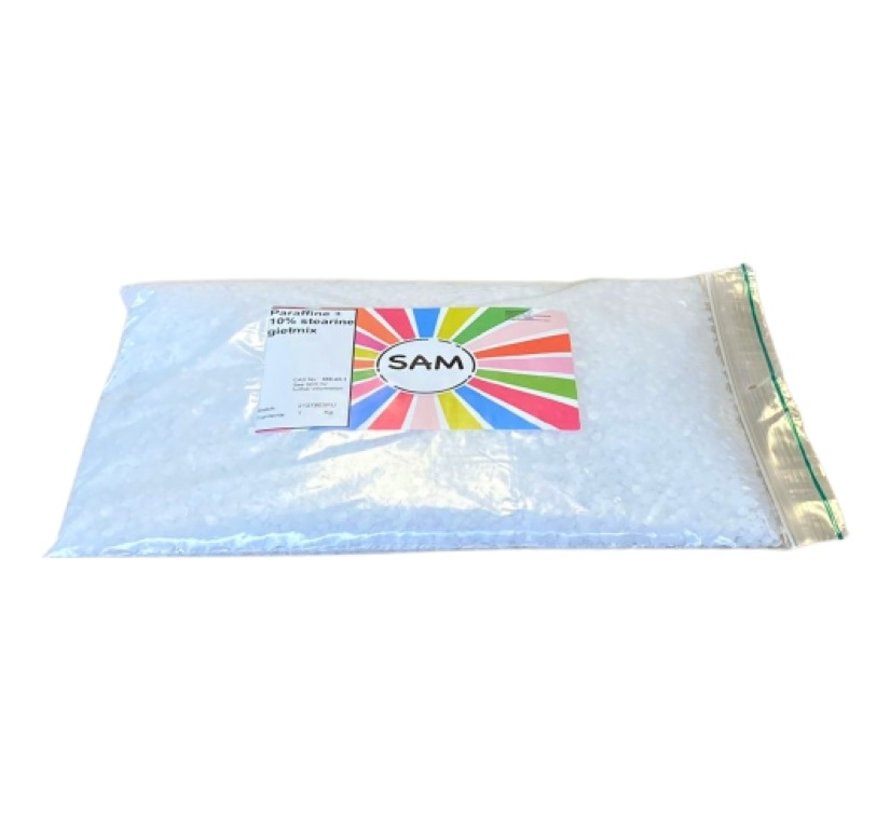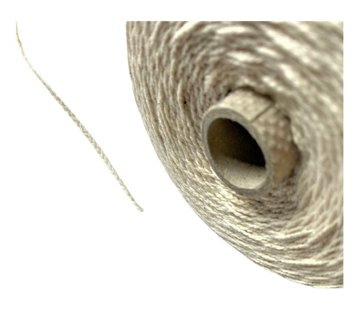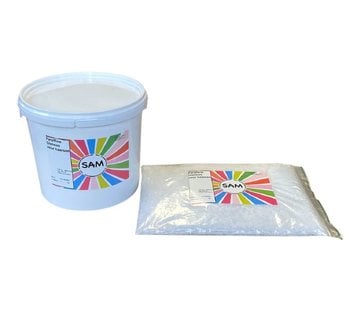SAM Paraffin + 10% Stearin Casting Mix
This casting mix contains 90% paraffin and 10% stearin. A ready-to-use mix for pouring candles. The combination of paraffin and stearin improves the flammability.
Paraffin is a "residual" product of the fossil raw material petroleum. This is a saturated hydrocarbon.
The paraffin we offer is pure and contains no harmful substances. From a toxicological point of view, this paraffin is harmless to public health.
Stearin is often added to paraffin for candles to improve combustion properties. Because of the amount of benefits that the stearin brings, this is definitely recommended.
Adding stearin to paraffin provides:
- Improved combustion properties
- Less dripping
- Less smoke
- Candle burns neater
- Candle gets harder and stronger
- Depth of colors get better
- Better to unload from a mold
- Improved shrinkage properties
Making candles with casting mix
To make a candle, a certain "recipe" is often used. By making a candle you can determine your own shape, color and scent, which gives the candles extra character and makes the atmospheric experience of burning extra special.
Melting casting mix:
First read all the information about the casting mix, so that you can start working correctly and safely.
Safety:
It sounds logical, but before you start, think about safety for yourself, for others and for animals!
Molten casting mix can cause burns. Provide the right protective equipment and think about fire safety.
Time:
Give the melting of casting mix some time! Casting mix is a poor conductor of heat and will therefore melt slowly.
Contraction/expansion:
Casting mix can expand up to 20%. After solidification, it will also shrink again. Keep this in mind when you pour the paraffin into a mold.
Ambient temperature:
The ideal ambient temperature for processing casting mix is 18°C.
To heat:
Heat the casting mix indirectly by means of "au-bain-marie". Make sure you can regulate temperature by means of an adjustable thermostat. (for example, the knobs on your stove.)
Wick
A wick is the heart of your candle. The wicks we offer are of the highest quality and safety standard, so your candles will burn well.
Choosing the right fuse:
Flat wick: Most commonly used for pouring and dipping candles
Waxed wick: Mostly used for tea lights or filling glasses or jars
Outdoor wick: Mostly used for outdoor candles or torches
The following factors influence the choice of the wick:
- Form
- Diameter
- Composition "recipe"
- Add color
- Fragrance Addition
When producing multiple candles, we recommend making a test candle first.
Practice makes perfect:
Here are a few possible solutions to known issues:
Smoke from the candle:
- try a smaller fuse
- check fuse placement
Dripping the candle:
- use a thicker fuse
- check if the candle is straight
- prevent drafts when burning
Small flame:
- use a bigger fuse
- Customize the addition (recipe, color, fragrance)
Carbon deposition on the fuse:
- use pure paraffin and limit additions
- check centering and relaxation of the wick while pouring
White ash at the end of the wick:
- use pure paraffin and the right additives
- check if the wick is straight in the mold before pouring
Fragrance and color
By adding a fragrance and/or dye, you can personalize a candle and give it a unique character. This can change the burning properties, but because of the many raw materials in the color fragrances, it is not possible to indicate exactly what causes this change.
It is therefore wise to test a candle first. Look at the composition, the amount of dye and fragrance and the choice of the wick.
Note: Fragrance oils can affect moulds.
Processing color pigment
1. Weigh the required amount of color pigment or count the number of color tablets to be processed.
2. Dissolve the pigment in a separate mixing bowl at a ratio of 1:10 at a temperature of approx. 90˚C.
3. Mix this whole with an electric mixer until a homogeneous mass.
4. Pour this concentrate into the rest of the wax and mix again until a homogeneous mass.
5. Check that the correct color has been achieved before starting candle production.
Dipping at 80ºC:
- Dip once = approx. 1.5% (15 grams / 15 tablets per kg of wash).
- Dip twice = approx. 1.0% (10 grams / 10 tablets per kg of wash).
- To achieve the desired effect, you can increase or decrease the amount.
- Dark colors may require a higher concentration.
Through-and-through coloring:
- Add approx. 0.1% - 0.2% p/kg (1 — 2 grams / 1 — 2 tablets per kg of wash)
- To get the desired color, you can increase or decrease the amount.
- Dark colors may require a higher concentration.
Differences during processing:
When coloring candles, many different factors affect the final result, including:
- way of mixing;
- temperature;
- dosage.
Below is a clear picture of the differences.

From left to right:
Candle 1: mechanically mixed and dipped 2 x at 70 °C
Candle 2: manually mixed and dipped 2 x at 85°C
Candle 3: mechanically mixed and dipped 2 x at 85°C
Candle 4: mixed manually and dipped 2 x at 70 °C
The final color rendering depends on the raw material. This is clearly visible in the image below. On the left, color pigment is used in candles with a high fat content, in the middle image the color reproduction is shown with 100% stearin candles and on the right the colors in pure paraffin.

The type of wax with which the color is dipped is also important. For the candles below, the left candle has been dipped in the Paraffin Casting Wax, while the right candle has been dipped with Paraffin Dip Wax.

















